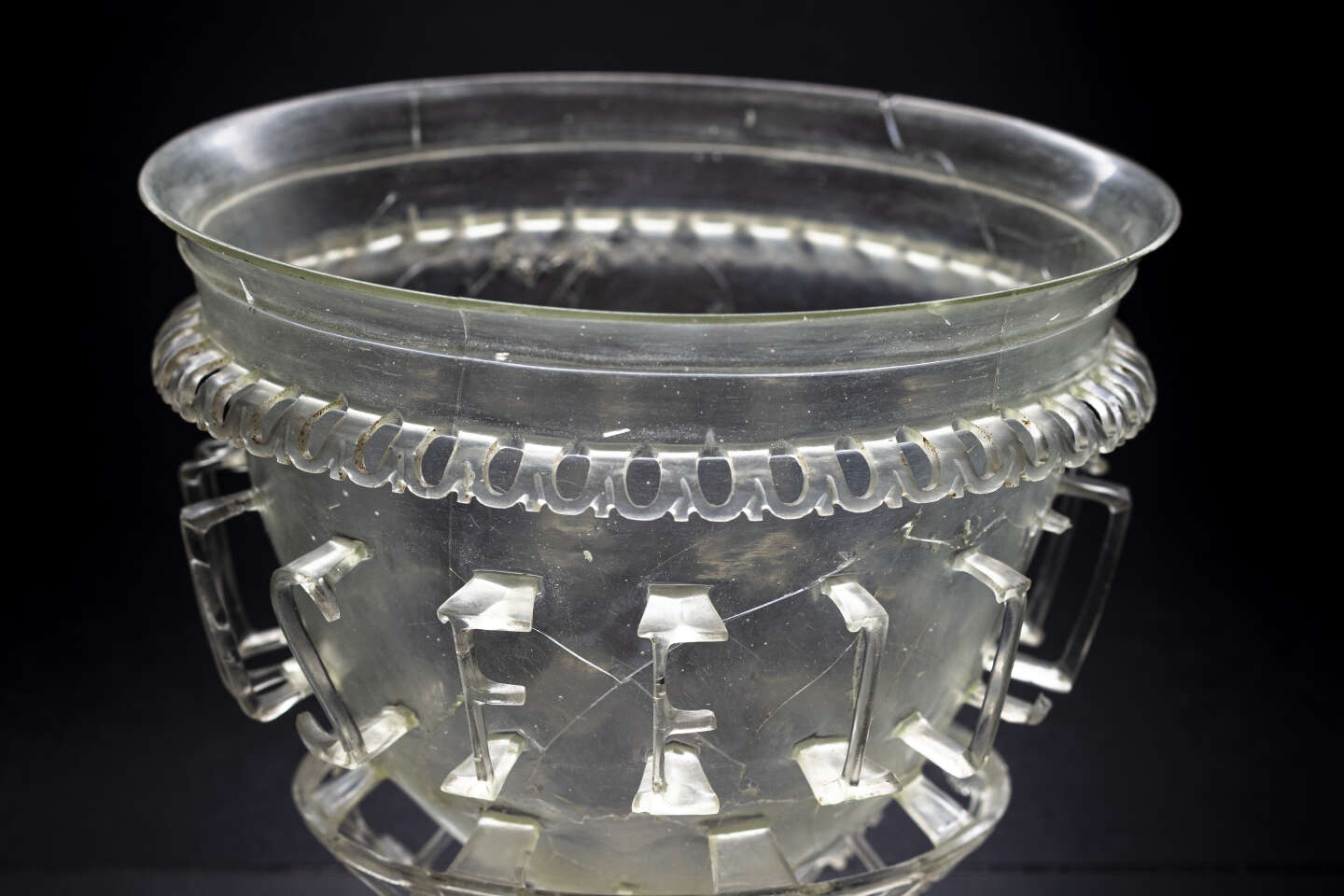A true survivor. This is the word that comes to mind when we look at the Autun diatrete vase, exhibited at the National Archaeological Museum in Saint-Germain-en-Laye (Yvelines).
Crystal clear, with a diameter of 15 centimeters and a height of 12.6 centimeters, the vase was easy to hold. On the side, raised letters that form the words stand out “VIVAS CONGRATULATIONS” (“live in bliss”). If you get a little closer, you will see fine scars running along the length of the vase. Discrete evidence of the painstaking restoration work carried out by Katja Broschat in the Roman-Germanic Central Museum in Mainz, Germany. A photo on the wall shows the state of the vase before the restoration: in dozens of pieces.
“This restorer is the only one allowed to work on Tutankhamun, she spends half her time in Egyptunderlines Nicolas Tisserand, archaeologist at the National Institute for Preventive Archaeological Research (Inrap). But she tackled this issue head-on, she is passionate! »
The vase was found in a sarcophagus in the heart of a paleo-Christian necropolis, during excavations carried out by Inrap in 2020 in Autun, in Saône-et-Loire. The discovered graves date back to the 3rd centurye to Ve century. It is during this transition period for the city of Augustodunum (which later became Autun) that the exhibition “From one world to another. Autun from Antiquity to the Middle Ages. The city then flourished: there were numerous theaters, Gallo-Roman temples and even a center for higher education, but it also began to absorb Christian culture with the construction of churches.
Cut from one block of glass
In the necropolis, pagans and Christians face each other. In addition to the vase, archaeologists also discovered numerous other buried objects in it, such as gold jewelry or amber and jet pins. Also visible are the remains of a fabric sewn with gold thread; it may be a tunic worn over one shoulder by a deceased person.
However, one question remains unanswered: whose was this famous vase? Archaeologists studied it closely and noticed that it was made with a very special technique: it was cut from a single piece of glass. According to Nicolas Tisserand, “We see very light traces of manual sanding, as if it was done with sand. We think it will take five years to master the technique and then a year of work” to get such a vase. So this one was definitely very expensive.

